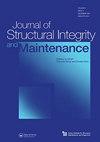Introduction
IF 3.1
Q2 ENGINEERING, CIVIL
Journal of Structural Integrity and Maintenance
Pub Date : 2020-04-02
DOI:10.1080/24705314.2020.1747194
引用次数: 0
Abstract
This special issue on “Structural Integrity of Offshore Energy Industry“ originated at the 1 International Conference on Structural Integrity of Offshore Energy Industry held in September 2018 in Aberdeen, Scotland. The offshore, marine, and subsea energy industries continue to evolve creating new challenges and risks for the integrity, safety and reliability of its structures and systems. There is a push to expand operations into new locations and environments, such as greater depths, where operational conditions are considerably harsher. Many assets in mature fields are rapidly reaching or have already exceeded their original design life and safe but affordable life extension and decommissioning are becoming major objectives. The recent rapid developments in renewable energy technologies have introduced new challenges for maintaining at minimum cost the reliability and integrity of structures and equipment in remote locations. There are also exciting new opportunities, but also significant challenges and uncertainties, in applying structural health monitoring and non-destructive testing and the novel concepts of data science to safety and structural integrity. This special issue brings papers authored by international researchers that discuss and address the current and emerging issues and challenges, including modelling of deterioration of wind turbines, strengthening composite wind turbine blades with nanotubes, detecting damage in pipelines, calculating stress concentration in armoured flexible pipes, and applying the theory of value of information and data driven approaches to structural integrity management.介绍
本期《海洋能源产业结构完整性》特刊源于2018年9月在苏格兰阿伯丁举行的第1届海洋能源产业结构完整性国际会议。海上、海洋和海底能源行业不断发展,为其结构和系统的完整性、安全性和可靠性带来了新的挑战和风险。有一种趋势是将作业扩展到新的地点和环境,例如作业条件相当恶劣的更深的深度。成熟油田的许多资产正迅速达到或已经超过其原始设计寿命,安全且经济实惠的寿命延长和退役正成为主要目标。最近可再生能源技术的快速发展为以最低成本保持偏远地区结构和设备的可靠性和完整性带来了新的挑战。在将结构健康监测和无损检测以及数据科学的新概念应用于安全和结构完整性方面,也存在令人兴奋的新机遇,但也存在重大挑战和不确定性。这期特刊汇集了由国际研究人员撰写的论文,讨论和解决当前和新兴的问题和挑战,包括风力涡轮机退化的建模,纳米管增强复合风力涡轮机叶片,管道损伤检测,装甲柔性管道应力集中计算,以及应用信息价值理论和数据驱动方法进行结构完整性管理。
本文章由计算机程序翻译,如有差异,请以英文原文为准。
求助全文
约1分钟内获得全文
求助全文
来源期刊

Journal of Structural Integrity and Maintenance
ENGINEERING, CIVIL-
CiteScore
3.90
自引率
9.50%
发文量
24
 求助内容:
求助内容: 应助结果提醒方式:
应助结果提醒方式:


